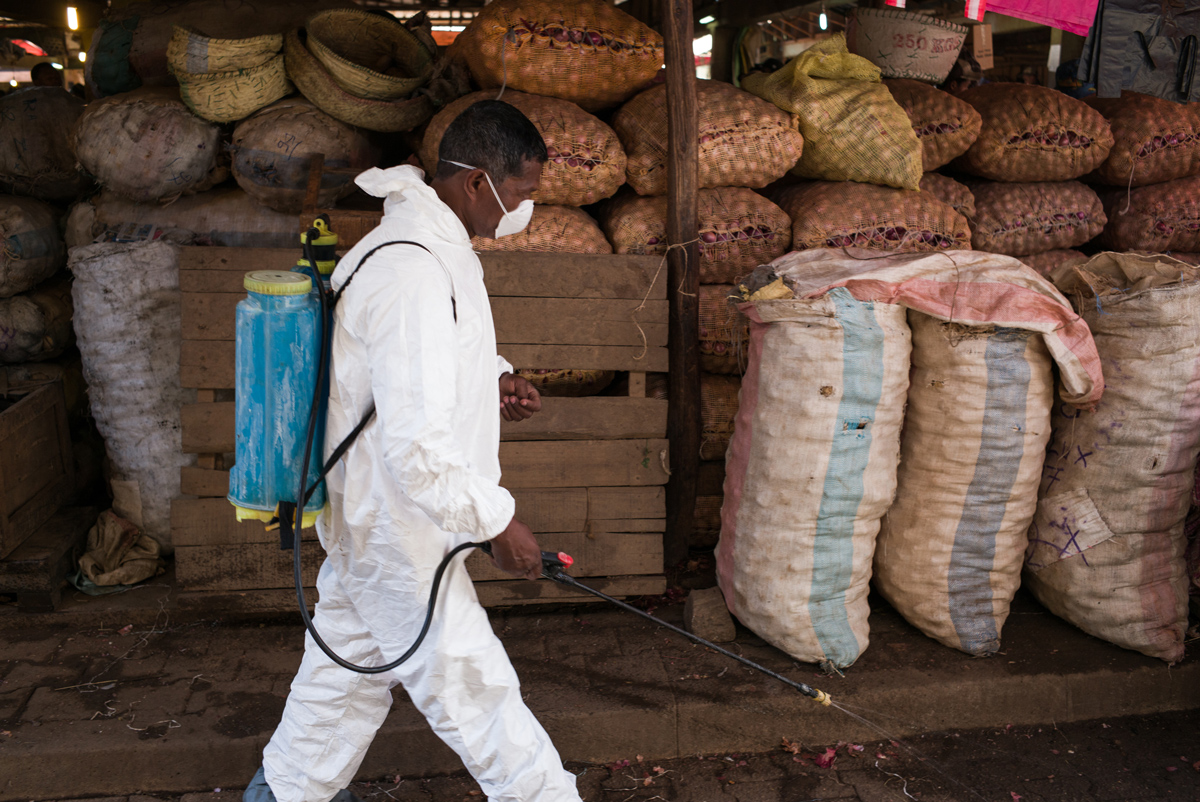How the Plague Outbreak in Madagascar Got So Bad, So Fast

The death toll from a recent plague outbreak in Madagascar is rising, according to news reports.
The country's main agency responsible for tracking the disease, the Institut Pasteur de Madagascar (the Pasteur Institute of Madagascar), says the current outbreak, which began in August, has resulted in 805 cases of plague, causing at least 74 deaths, as of Oct. 16. (The latest report from the World Health Organization (WHO) from Oct. 12 places the death toll at 57 out of 684 cases.)
Plague in Madagascar isn't new; the WHO estimates that, on average, there are about 400 cases of bubonic plague (the more common form of the disease) in the country annually. But the number of cases and deaths in the current outbreak has exceeded health officials' estimates. So, what's different this year? And how can the outbreak be stopped? [27 Devastating Infectious Diseases]
One reason the plague that's spreading in Madagascar this year is so deadly is that the disease is spreading in its "pneumonic" form. Unlike the more common bubonic plague, which is spread from rats and fleas to humans, the pneumonic plague can spread from human to human, said Dr. Peter Small, an infectious-disease specialist and director of the Global Health Institute at Stony Brook University in New York.
Both forms of the plague are caused by the bacterium Yersinia pestis, which lives in fleas and rats. When the plague-causing bacteria get into a person's blood from a fleabite, it can travel to the lymph nodes. These lymph nodes become inflamed; in this form, they're called "buboes," which is how the bubonic plague gets its name. Along with inflamed lymph nodes, the plague causes symptoms similar to those of malaria or the flu, such as fever, chills and nausea.
The pneumonic plague develops when bubonic plague goes untreated and the infection moves from the lymph nodes into the lungs, Small told Live Science. Once in the lungs, the bacteria can be expelled into the air in suspended particles. There, it can live for more than a day, Small said. Madagascar is used to dealing with the bubonic form, which doesn’t move human to human, said Small, so the high rate of pneumonic plague in this outbreak (about 65 percent of cases thus far) has made it particularly severe.
"If anyone has pneumonic plague, everyone else is at risk," Small said.
Sign up for the Live Science daily newsletter now
Get the world’s most fascinating discoveries delivered straight to your inbox.
Indeed, this airborne form of the plague can be deadly in as little as 24 hours after symptoms begin, said Lila Rahalison, a microbiologist who has studied the plague for 15 years.
Crowded conditions
Rahalison told Live Science that the current outbreak in Madagascar was also spurred by another factor: Patient zero — the first patient identified in the outbreak— fell ill while traveling toward the country's crowded capital city, Antananarivo. The patient, a 31-year-old man, started having malaria-like symptoms on Aug. 23, according to the WHO. Four days later, he started coughing and then died while traveling on a small, packed bus, WHO officials said. By the time the outbreak was detected, on Sept. 11, all of the people patient zero had infected had traveled to Antananarivo and beyond. Plague cases are now present in 35 of the 114 districts in Madagascar, according to the WHO. [5 Most Likely Real-Life Contagions]
The easy transmission of the disease and high population density in the capital led the disease to spread more quickly, Rahalison said. To slow the current outbreak, it's vital to control the spread of the plague and get lifesaving antibiotics to afflicted regions as fast as possible is vital, she said.
But these tasks can be challenging in a country like Madagascar, experts say.
"For a health care system with [few] resources, it’s hard to adapt to such a rapidly developing disease," said Dr. Simon Grandjean Lapierre, an infectious-disease specialist and medical microbiologist also at Stony Brook University. Pneumonic plague is fatal unless patients are treated with antibiotics, he added.
The government has shut down most of the country and stopped travel in an effort to contain the spread of the disease, Grandjean Lapierre told Live Science.
But in the Ranomafana National Park and Antananarivo, where Grandjean Lapierre conducts his research in Madagascar, most of the population doesn't seem very worried, possibly because the community hasn't internalized the increased dangers of the pneumonic plague versus the bubonic form, he said.
Moreover, "the Malagasy people are still shamed about the plague," said Rahalison, who is originally from Madagascar. "There is a stigma around it. For people, it's linked to the rats; rats are linked to dirt and poverty. So it's [a] difficult situation." Rahalison worries that this shame encourages sick people to hide — something she's encountered while working with the WHO in Madagascar.
"Now, we need a very fast response," Rahalison said. "It’s critical that the outbreak be contained as soon as possible."
Originally published on Live Science.

Flu: Facts about seasonal influenza and bird flu
What is hantavirus? The rare but deadly respiratory illness spread by rodents











